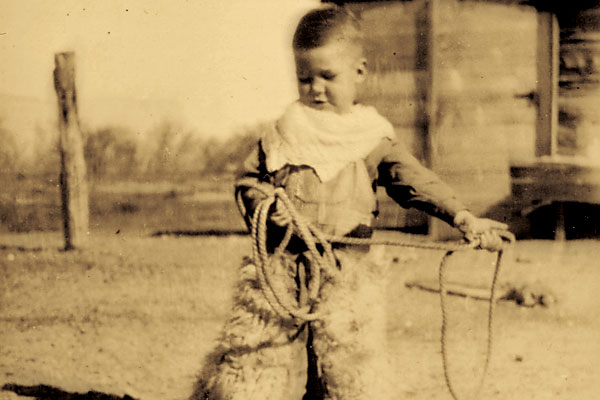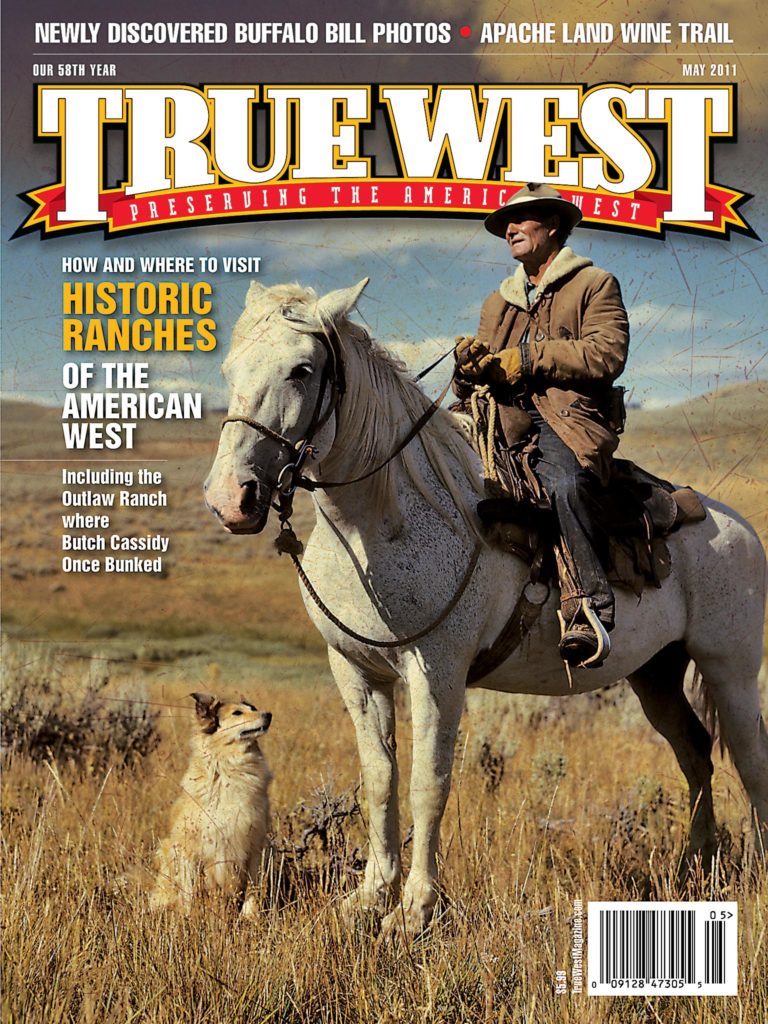 For all its gritty Old West authenticity, the Coen brothers’ 2010 movie version of Charles Portis’s book True Grit includes some near misses, time wise.
For all its gritty Old West authenticity, the Coen brothers’ 2010 movie version of Charles Portis’s book True Grit includes some near misses, time wise.
Mattie Ross’s “Boss of the Plains” Stetson may not have quite made it to western Arkansas by the mid-to-late-1870s, and her put-down of Texas Ranger La Boeuf for dressing like a “rodeo clown” is at least half a century too early.
The appearance of “Lucky” Ned Pepper in angora hair-on chaps is also a little suspect. Smooth leather “shotgun” chaps made from cowhide became part of the cowboy’s wardrobe about this time, and hair-on versions may have been around, but chaps made with angora probably took a few years to develop. Whether historically accurate or not, those woolies are a great scene stealer in the movie, and you’re likely to see woolies and other chaps turn up in places other than ranches and rodeo arenas.
Of all the components of a working cowboy’s getup, the leather leggings called chaps are the one major accessory that has not been widely embraced as a fashion statement. Chaps are one of the most highly specialized components of the cowboy’s outfit, providing protection from thorns, horns, stickers and storms—or at least cold weather.
Traditionally cut from thick pieces of cowhide and secured on the legs with lacing (and later, zippers or straps, depending on the design), chaps are worn over pants or jeans and belted just above the hips. They work as a kind of streamlined apron that allows the cowboy to wear them comfortably in the saddle and on the ground. They are crotchless, so they don’t bind up in sensitive parts of the anatomy. Chap leathers also add some grip in the saddle seat and a measure of protection from chafing where the rider’s legs rub against the leather jockeys, skirts and fenders of the Western saddle.
The origins of cowboy chaps may have evolved independently in different regions of the Old West. The most widely accepted school of thought holds that chaps evolved from early leather covers called armas (“shields”) by mounted Spanish cattle herders. Adapted from the livery worn on the legs of medieval mounted knights, this rather unwieldy design was streamlined to leggings by Mexican vaqueros for quicker, easier and safer dismounts.
Chaps are also thought to be borrowed from the leather leggings worn by American Indians, who wore them for protection from cold weather and brush.
Both theories may have validity, but the word “chaps” comes from chaparejos or chaparreras, Spanish words for the protective leggings designed to safeguard the rider from dense, stickery brush in northern Mexico and what is now the American southwest (Texas, New Mexico and Arizona) called chaparro (“chaparral”). Texas cowboys were wearing leather leggings they called “chaps” by the late 1870s.
Chaps may finally become a fashion statement as Western designers are now offering highly decorated and even bling-covered versions. Woolies are also turning up in traditional chap makers’ catalogs for the first time in years, if not decades.



